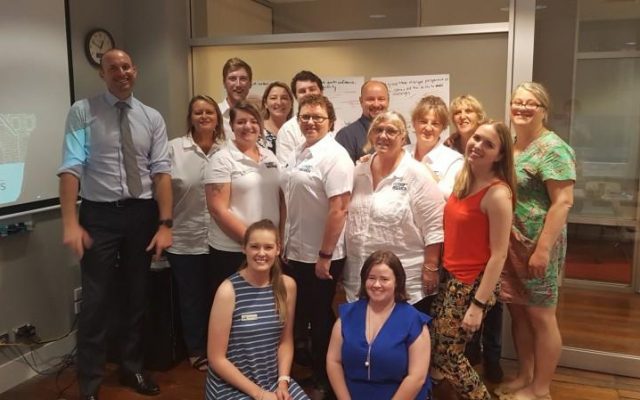
Part 7: Our top 10 hacks for evaluation writing
Starting a fresh evaluation report can be daunting. We need to synthesise large amounts of data, navigate social and political climates, and balance (sometimes) divergent values and interests. While there are some common report structures, there is no magic recipe for reporting. On top of this, emotional stress outside of work, perfectionism, and pressure to meet a deadline can also leave us drawing a blank.
So, in the spirit of getting started, here are our top 10 hacks, tips and tricks for evaluation writing.
Get in the zone
1. Start early. Report writing often takes longer than we think it will. This is because writing isn’t a simple task that comes after data analysis. Analysis and synthesis are iterative processes that often happen as part of the writing process, as we unpack the data and understand how they interrelate. Start your report early to allow enough time to reflect on your findings, elevate your key messages, and edit.
2. Clear your head. Your environment can have a huge influence on your ability to focus. To clear your head and get your creative juices flowing, find a workspace that works for you. For example, try writing in a local café or library, perhaps while listening to a new classical playlist. Or come back after a walk around the block for fresh air or stepping out for a gym class. Removing distractions, such as emails and social media notifications, can also help you get in the zone.
Get the words down
3. Start with… something! Anything! It’s easy to overthink and over critique your own words. But remember: ‘first drafts don’t have to be perfect, they just have to be written’. So, start typing. If your methods are front of mind, jot them down. If you’re stuck on answering the big questions, dive into your conclusions.
4. Structure first or later. Get to know your own style. Do you find your story as you write, or do you need a framework before you begin? If the former, you’ll need to reflect on your structure down the track and re-order what you’ve written so your message is clear. If the latter rings true, try writing a skeleton for the report, signposting key headings before fleshing out the text. But don’t get glued to your initial structure; be open to change as your understanding of the data and messages evolves.
5. Phone a friend. Not everyone is a natural writer. Some are natural speakers. If this is you, try calling a colleague to brainstorm your ideas. What you choose to highlight verbally can help clarify what’s most important. The language we use in conversation can also be plainer and clearer, so you might even try recording your conversation to capture the gold, then transcribe it. Similarly, hand writing our thoughts before typing can be illuminating.
6. Set manageable goals. Think realistically about the time you have available and set manageable weekly, daily and even hourly goals. Breaking down a big task into bite-sized chunks can help you focus on one thing at a time. You can even set a timer, giving yourself a break, a tasty treat or a quick scroll on your Instagram feed between sessions.
7. Write in pairs. Generally, evaluation is done in teams; each member has their own expertise, knowledge and takeaways from the project. Writing in pairs with one person typing can be a nice (and often efficient) way to test your ideas and get the story down. This process works best when you know your partner well and can be honest with each other.
Get it polished
8. Re-centre. Once we start writing, it can be hard to see the wood for the trees. If you’re losing sight of where you’re headed, come back to your purpose and audience. What do they want from the report? How will they use it? How much detail do they need? This will help guide and re-focus your writing.
9. Kill your darlings. Your darlings are those words, phrases and even entire chapters that you’re proud of and want to keep, but that aren’t necessarily clear, relevant to the reader or essential to the story. Bringing a critical eye to editing the words and structures of your own work is hard, but necessary. It shows you respect your readers.
10. Edit and proof: Allowing time to copy-edit and proof your work is critical – it’s amazing how distracting a small typo can be to a new reader. Editing is particularly important when there have been multiple writers involved, to ensure a consistent tone and voice throughout. To edit, take time away so you can review with fresh eyes. You shouor also get to know and look out for your own weaknesses. Read the report in a new font, printed format or aloud to pick up any clumsy phrasing. You can also draw on our plain English writing tips to help you cut the clutter.
What next?
While it’s hard to cover all the intricacies of evaluation writing, we hope this seven-part Communication for Evaluation series has provided a good overview, as well as some handy tips to support your future reports. Through this series, we’ve covered ways to:
- Know your audience
- Make it a process not just a product
- Structure it
- Tell stories
- Cut the clutter (use plain English)
- Hack yourself to write better.
By improving how we communicate, we’re on a mission to increase evaluation use. If you have more thoughts or questions about communicating evaluation, reach out to Jade, Emily or Ruby.




